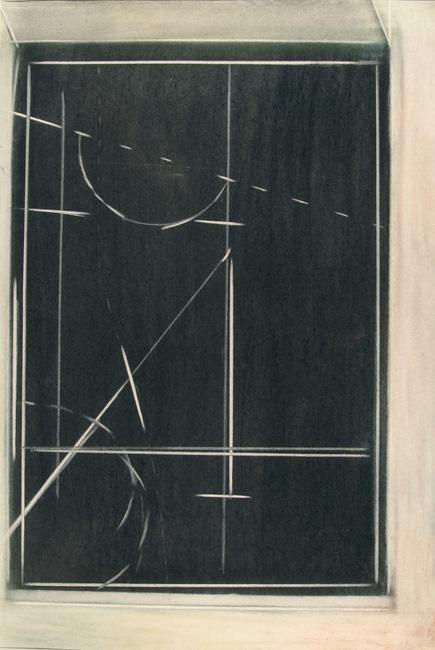
Paul Woodrow
1941 - 2015
Paul Woodrow was an inventive improviser, a multi-disciplinary artist, musician and influential teacher, whose work sought to bridge the gap between art and life. Born in the UK, he earned a teaching certificate from the University of Leeds in 1966, and worked in Northern England as a teacher and piano player, before immigrating to Canada in 1967. He then completed an Art Diploma in Painting from what is now the Emily Carr University of Art & Design, Vancouver, and an MA in Art Education from Concordia University, Montreal, before coming to the University of Calgary’s Art Department in 1977. He taught Studio and Art Theory courses for many years, and was an important mentor to many students.
His eclectic interests ranged from jazz, blues and African music, to painting and print-making, performance, video and installation. Engaged with Fluxus – a movement from the 1960’s and 70’s involving nations on three continents, that tested the limitations of the concept of art – Paul was allied with an international group of artists working out of New York, including Iain Baxter (N.E. Thing Co.), Clive Robertson (W.O.R.K.S. Canada), Hervé Fischer (The Sociological Art Group of Paris), and Mireille Perron. The Fluxus ethos was rooted in playfulness, but was also an anti-commercial and philosophical way of life, seeking to take art out of the traditional venue of museum, refocusing it on events and ideas, and privileging the artistic process over the end product.
After several years of participating internationally in performance art and improvised music, Woodrow turned to painting in the 1980s. A 1989 show, Dreaming of Nature (Muttart Gallery, Calgary), presented scenes of nature as spontaneous, dream-like and imagined, without the need to see or experience nature itself. Abstract marks took on a life of their own, transformed into lakes, trees and figures.
In the 1990s he returned to installation work, collaborating on projects with Alan Dunning and Dr Morley Hollenberg. The Einstein’s Brain Project was an evolving series of immersive, virtual-reality installations held in different venues, including at the Alberta Biennial of Contemporary Art of 2010, at the AGA, Edmonton. An art and science project whose meaning is activated by the viewer, it posits the brain as a metaphor for our physical relationship to the outside world, and questions the boundaries of the body, the real and the artificial. The work suggests that the so-called objective world is not some reality outside ourselves, but a construction of our own consciousness, memories and mythologies. The project’s work has been shown internationally, and featured in several books: Data Made Flesh (2004), Art and Digital Media (2009) and Art and Science (2010).
Woodrow received significant recognition in Canada and abroad, including in the US, Japan, Europe, Puerto Rico and Argentina. His work has been exhibited at venues such as Stockholm’s Museum of Modern Art, and at the Tate Museum in London, UK. He has also been included in the Calgary Glenbow Museum’s recent Made In Calgary book series.
His eclectic interests ranged from jazz, blues and African music, to painting and print-making, performance, video and installation. Engaged with Fluxus – a movement from the 1960’s and 70’s involving nations on three continents, that tested the limitations of the concept of art – Paul was allied with an international group of artists working out of New York, including Iain Baxter (N.E. Thing Co.), Clive Robertson (W.O.R.K.S. Canada), Hervé Fischer (The Sociological Art Group of Paris), and Mireille Perron. The Fluxus ethos was rooted in playfulness, but was also an anti-commercial and philosophical way of life, seeking to take art out of the traditional venue of museum, refocusing it on events and ideas, and privileging the artistic process over the end product.
After several years of participating internationally in performance art and improvised music, Woodrow turned to painting in the 1980s. A 1989 show, Dreaming of Nature (Muttart Gallery, Calgary), presented scenes of nature as spontaneous, dream-like and imagined, without the need to see or experience nature itself. Abstract marks took on a life of their own, transformed into lakes, trees and figures.
In the 1990s he returned to installation work, collaborating on projects with Alan Dunning and Dr Morley Hollenberg. The Einstein’s Brain Project was an evolving series of immersive, virtual-reality installations held in different venues, including at the Alberta Biennial of Contemporary Art of 2010, at the AGA, Edmonton. An art and science project whose meaning is activated by the viewer, it posits the brain as a metaphor for our physical relationship to the outside world, and questions the boundaries of the body, the real and the artificial. The work suggests that the so-called objective world is not some reality outside ourselves, but a construction of our own consciousness, memories and mythologies. The project’s work has been shown internationally, and featured in several books: Data Made Flesh (2004), Art and Digital Media (2009) and Art and Science (2010).
Woodrow received significant recognition in Canada and abroad, including in the US, Japan, Europe, Puerto Rico and Argentina. His work has been exhibited at venues such as Stockholm’s Museum of Modern Art, and at the Tate Museum in London, UK. He has also been included in the Calgary Glenbow Museum’s recent Made In Calgary book series.

